|
|
|
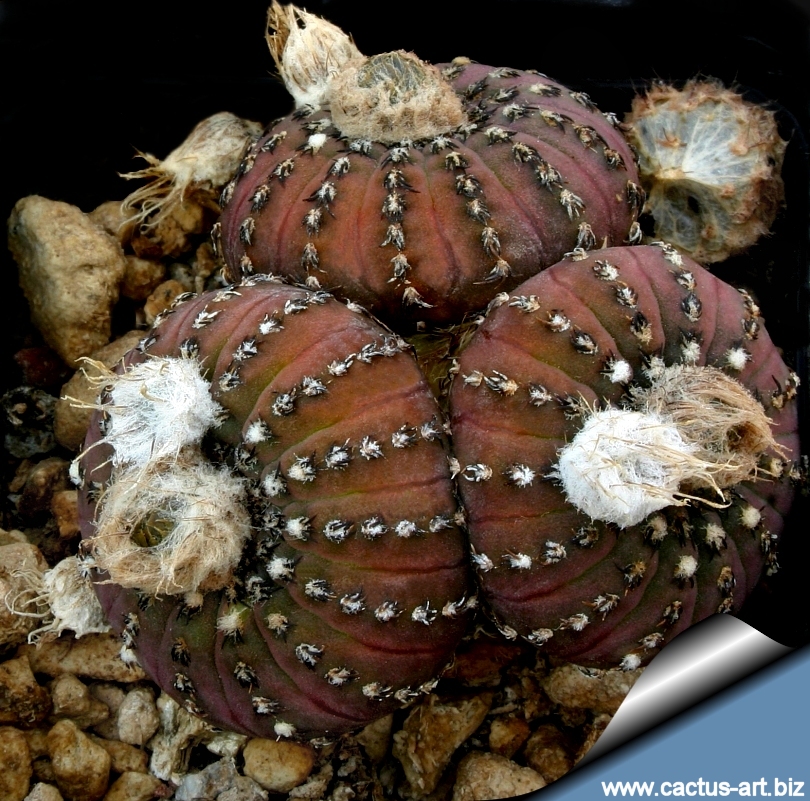
Frailea castanea is one the of most
fascinating cacti. |
|
|
|
Description: This is a very singular
miniature plant, and one the of most fascinating cacti.
Habit:
Disk like, flattened to
globose body.
Stem:
It is diminutive in size and several remain
solitary, never outgrowing 4-5 cm diameter. Stems are chocolate
brown or dark reddish-green with 8-15 flat
ribs.
Spines:
3-15 minute, short, black
spider-like,
appressed on the plant body and usually all bent downward.
Flower:
Sulphur yellow, sometimes larger than the plant
itself (4cm diameter). But don't be disappointed when the easily
produced
buds fail to open. Fraileas are
cleistogamous meaning that their flowers produce seed without
even opening. Without the need for
pollination, hence the buds rarely reach full
bloom and remain closed. They will open only in great heat in
the hottest, brightest, afternoon sun, if at all.
Fruit:
Dry
indehiscent that detach easily,
pericarp
membranous, fragile that break easily releasing the seed.
Seeds: Very big 3-3,5 mm wide.
|
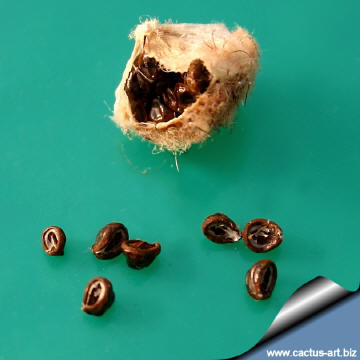
A dried fruit with the very large seeds (3 mm wide) |
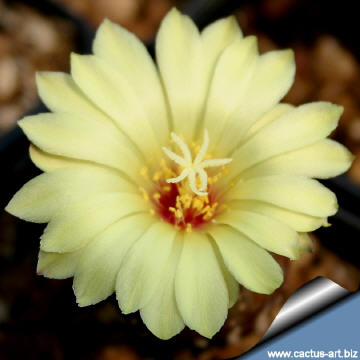
An unusual developed flower |
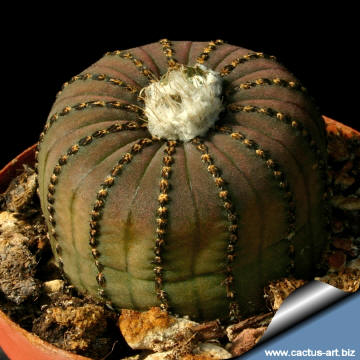
|
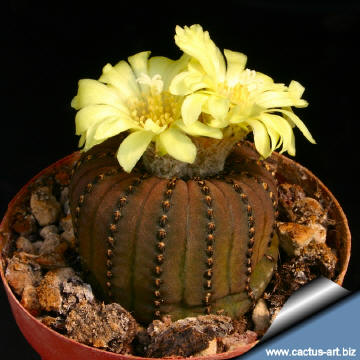
|
|
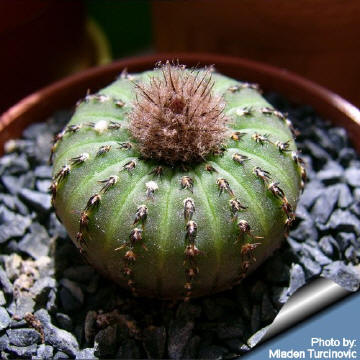
Photo and © copyright by
Mladen Turcinovic (Croatia) |
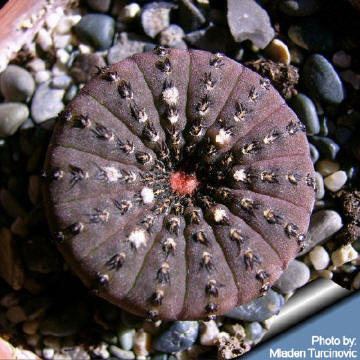
Photo
and © copyright by
Mladen Turcinovicc (Croatia) |
|
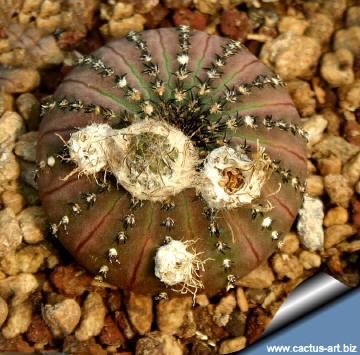 |
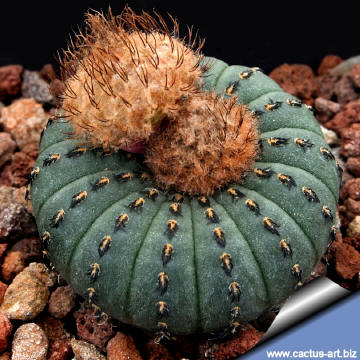 |
|
Cleistogamus flowers and
self pollinated fruits
|
|
Advertising
|
|
|
|
|
Family:
Cactaceae
(Cactus Family)
Scientific Name:
Frailea
castanea
Backeberg 1936
Published
in:
Backeberg
& F. M. Knuth
Kaktus
ABC: 248, 415,
1936.
Distribution:
The plant is found from Southern Brazil to Northern Uruguay
Conservation status:
Listed in CITES Appendix
II
Synonyms: Frailea asterioides
Werdermann
1937
Etymology:
The
genus name
"Frailea"
remembers the Spanish
"Manuel
Fraile",
born in 1850 who was responsible for the
cactus collection of
the Department of Agriculture of the United States at the end of
the XIX century.
The
species name
name
"castanea"
derives from the Latin name “Castanea” which
means
“chestnut” and refers to dark reddish-brown colour. (the
Latin "Castanea" derives from the Greek. "kastaneia",
which meant either "nut from Castanea" in Pontus (eastern
Greece) or "nut from Castana" in Thessaly, but probably
both places are named for the trees, and the word is probably
borrowed from a language of Asia Minor.
( The specific name implies:
"coloured like a chestnut").
|
|
|
|
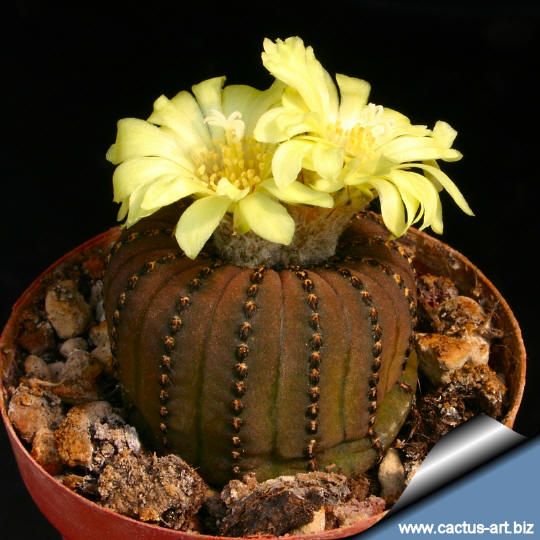
Flowers will open only in great heat on the hottest, brightest, sunny
afternoon , if at all. |
|
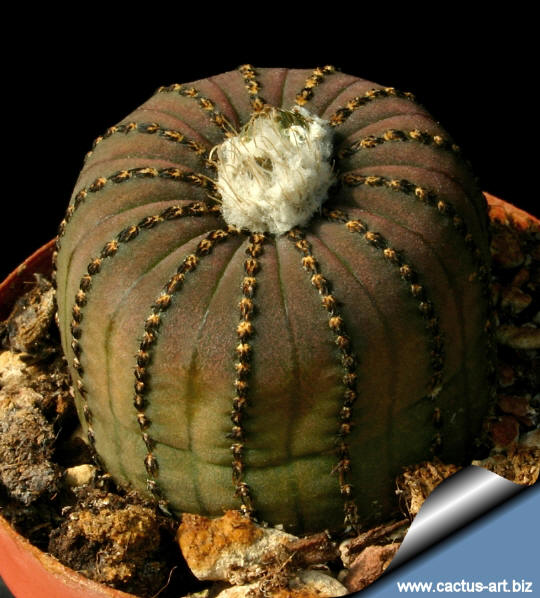 |
|
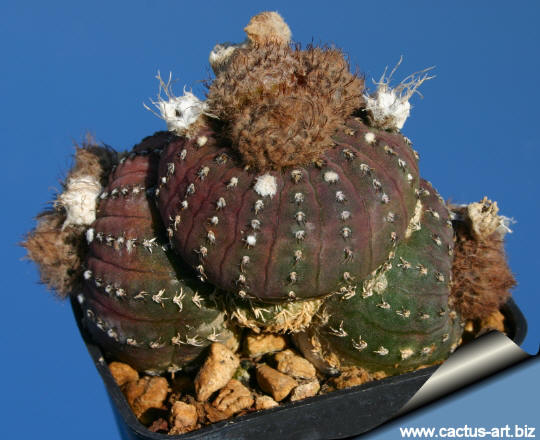
A plant grafted on Opuntia compressa
|
|
Cultivation:
Grow them in rich, porous soil and let
them
dry out between waterings.
These plants need a minimum temperature of 5-10° C (but occasionally
temperatures of a few degrees below 0° are not dangerous)
Sun Exposure: It
enjoys full sun,
and it can take on a near
black appearance when kept in bright light.
In
a shaded position the
plants grow faster, but are not
flat shaped and dark coloured.
Characteristically, during the
dry season plants
retract completely
under the ground both in the
wild and in
cultivation too.
Notes:
This plant is short living (It does not live long - about 10-15
years).
Propagation:
With fresh harvested seeds or (rarely) by
grafting.
|
|


|
|